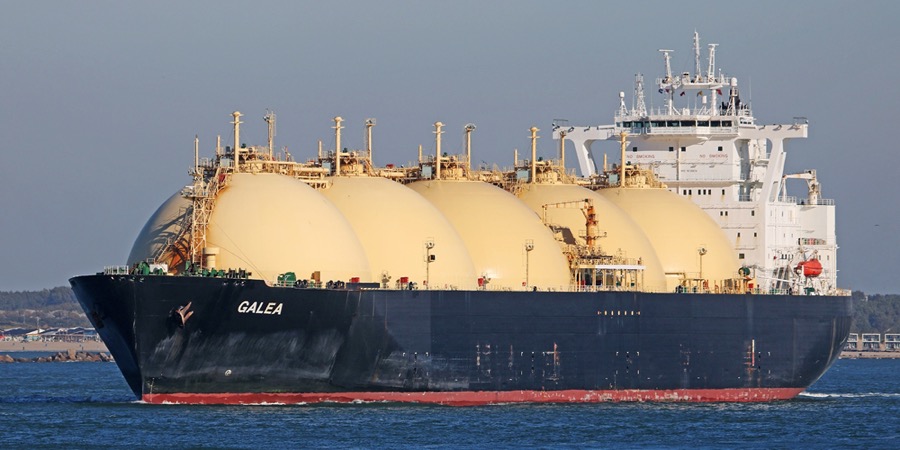The US energy security role is being questioned as natural gas exports receive new scrutiny. The Biden administration is reconsidering the way it licences new LNG export terminals, under pressure from climate campaigners escalating fights against fossil energy infrastructure.
There are even rumours that the US administration is considering placing a moratorium on new export permits. Understandably, the US LNG industry is concerned about delays to export licence approvals for new LNG plants.
But despite that, the EIA forecasts that US LNG exports will continue to grow as more export facilities come online. It expects exports equivalent to 11.8 bln cubic ft/d (bcf/d) in 2023 to rise to 12.4 bcf/d in 2024 and 14.4 bcf/d in 2025.
Big LNG investments exceeding $235 bln, are driving a 70% capacity increase by 2030, cementing LNG in the global energy mix for decades to come.
Globally, more than $720 bln is to be spent on gas pipelines under construction or planned, and an additional $190 bln is to be put on facilities to handle LNG imports.
A wave of new LNG plants is coming on stream, starting in 2025, that will keep the world hooked on natural gas for a long time.
In addition, LNG projects under development total 917 mln tonnes per annum of new export capacity, while demand for gas in Europe has been declining.
This defies global energy transition momentum for a more-gassy future. Nearly every major region is boosting investments in the infrastructure needed to increase the use of natural gas in power generation.
European natural gas futures prices tumbled to the lowest levels since August, now below EUR 30 per MWh. But they are still almost twice as high as they typically were before the Covid pandemic, impacting the competitiveness of European industry.
There currently don’t appear to be any LNG tankers heading to the Red Sea via the Suez Canal as Houthi rebel attacks continue. Shell has also suspended indefinitely all its shipments via the Red Sea.
In Cyprus, the Prometheus FSRU vessel is sailing from Shanghai to transform the island’s energy landscape.
But the lack of pipelines to bring the gas to power plants will delay switching power generation from diesel mazut to natural gas, likely into 2025.
EU industry held back
The EU economy is relatively stable but stagnant, as it still faces growth challenges.
European industry is unlikely to reach pre-pandemic growth rates anytime soon, as volatile energy prices continue to restrain industrial activity, holding back growth.
Trade unions are alarmed by the EU’s industrial collapse. They are deeply concerned about the scale of the industrial decline, as structurally high energy prices continue to lay waste to a crucial pillar of the bloc’s economy.
Eurostat said that year-on-year EU industrial output was down 5.8% in November.
Germany was the worst-performing major economy in the world, where rising rates and high energy costs contributed to 0.3% contraction.
Problems continue, with Germany making a gloomy start to the year, with its fractious government coalition lurching from crisis to crisis.
As a result and because of a sharp drop in coal-fired power generation and a downturn in heavy industry, Germany’s emissions fell by 11% in 2023 compared with 2022.
Around half of the reductions are down to short term effects like crisis-related declines in production and lower electricity consumption.
EU greenhouse gas emissions also fell by more than 5% in the second quarter of 2023, with the biggest decline recorded in electricity and gas supply, due to increased use of renewables and the slump in industrial activity.
Gas storage withdrawals have accelerated due to the cold snap, but levels remain above average. Europe is expected to survive winter comfortably, but the gas market remains volatile.
The IEA is forecasting a 61% share for renewable electricity in Europe by 2028, partly due to an unprecedented surge of solar panel installations.
French energy insurrection
France pushed national sovereignty to the maximum in a draft law on “energy sovereignty,” presented in January, which promotes nuclear power as a way of ditching fossil fuels, ignoring the EU’s 2030 renewable energy goals.
The European Commission said on 15 January that although gas and electricity prices have receded well below their 2022 peak, they are not forecast to return to pre-pandemic levels in the foreseeable future, warning of the long-term economic consequences of high energy prices on the EU’s competitiveness.
Germany’s dream of building a fleet of hydrogen-fired power plants is faltering. Not only because it is too expensive, but also due to a budgetary squeeze and demands for cost-cutting from industry.
Solution: forget hydrogen and focus on gas.
The European carbon allowance price closed at EUR 63.31 on Wednesday, the lowest level since March 2022. But it is expected to average EUR 90/tonne in 2024.
European Central Bank President Christine Lagarde said that she is “confident that short of another major shock, we have reached a peak” in interest rates. But hopes for interest rate cuts in the near future are fading. This may happen during the summer.
The findings from a survey were pretty depressing: public faith in western government, media and business institutions is low, with Britain displaying a particularly sharp decline.
Even NGOs are in trouble, with only 54% of people saying they trust NGOs to tell the truth about new innovations.
Germany, France and Portugal have been spearheading proposals to reform the EU and make it more nimble, in an effort to keep it governable with 30 or more members.
US election agenda
Fossil fuel expansion will be a critical issue at 2024 US elections.
The Biden administration is said to be reevaluating the climate criteria it uses when approving new LNG export facilities in a move that has the potential to stall pending projects as the election nears.
The US presidential election in November looms as the most significant for energy and mining commodities. A Trump administration would reject many of Biden’s policies for tackling climate change, and push for the repeal of incentives for low-carbon energy in the Inflation Reduction Act.
In the US market, Chesapeake Energy is acquiring Southwestern Energy in a $7.4 billion merger. The new entity will become the largest US natural gas producer, focusing on LNG markets.
China leads in demand
China’s economy will see recovery in 2024. The IMF forecasts that the Chinese economy will maintain sound growth in 2024 and continue to account for a third of global economic growth.
According to the IEA, China, as well as the world petrochemical industry, are driving unprecedented growth in production. These are used to make countless everyday products like clothing, detergent and tyres.
The speed and scale of the expansion of China’s petrochemical sector dwarfs any historical precedent, driving global oil demand growth.
China’s green tech surge could turn global climate politics on its head. The IEA estimates that China more than doubled its solar generation and added two-thirds to its wind generation capacity in 2023. By 2028 it will add four times more RES than the EU.
According to the IEA, China is the world’s renewable powerhouse and will account for 60% of global renewables in 2028.
China’s economy grew by 5.2% in 2023, overcoming earlier challenges and surpassing the 3% growth of 2022. It expects this to reach 5% in 2024.
Dr Charles Ellinas is Senior Fellow at the Global Energy Center, Atlantic Council
X: @CharlesEllinas







